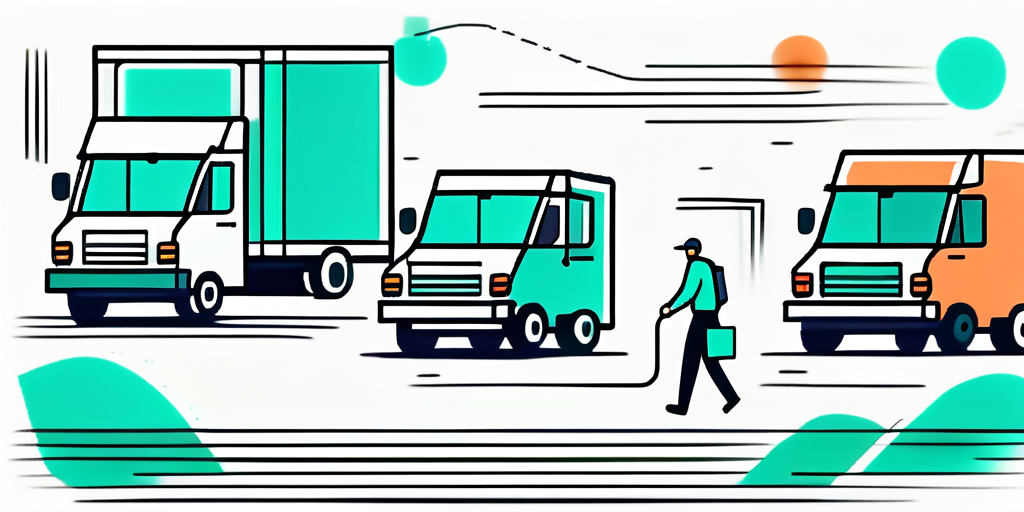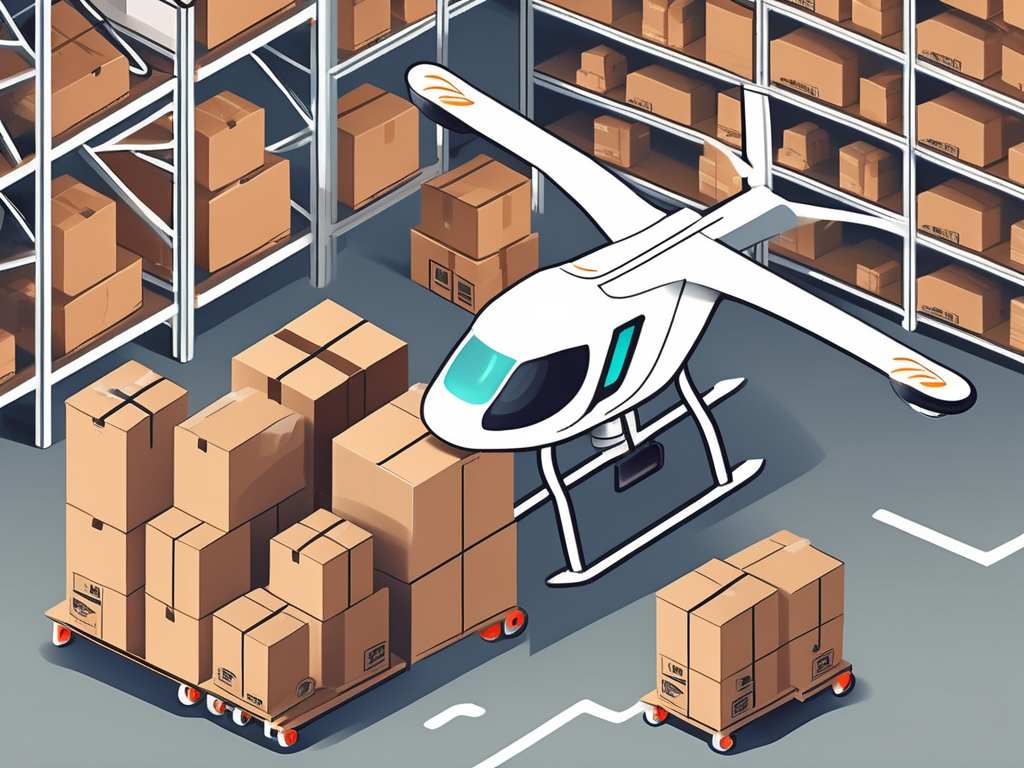Dropshipping has become a popular business model for entrepreneurs looking to start their own online stores without having to worry about inventory management or shipping logistics. By partnering with a dropshipping supplier, store owners can list and sell products on their online store without actually having the products in stock. In this ultimate guide, we will take you through the basics of dropshipping, setting up your Shopify store, finding and selecting products, and working with dropshipping suppliers.
Understanding the Basics of Dropshipping
What is Dropshipping?
Dropshipping is a retail fulfillment method where the store does not keep the products it sells in stock. Instead, when a store sells a product using the dropshipping model, it purchases the item from a third party and has it shipped directly to the customer. As a result, the merchant never sees or handles the product. The biggest difference between dropshipping and the standard retail model is that the selling merchant doesn’t stock or own inventory. Instead, the merchant purchases inventory as needed from a third-party supplier to fulfill orders.

Benefits of Dropshipping
Dropshipping offers several advantages for entrepreneurs who want to start their own business. One of the biggest benefits is the ability to start a business without investing a significant amount of capital. Since you don’t have to invest in inventory upfront, you can start your own online store with little to no money.
Furthermore, dropshipping provides the freedom to run your business from anywhere in the world. As long as you have access to a reliable internet connection, you can manage your dropshipping business from the comfort of your own home or while traveling to exotic locations. Imagine sipping a pi��a colada on a tropical beach while still being able to fulfill orders and communicate with customers.
In addition to the flexibility and low startup costs, dropshipping allows you to offer a wide range of products to your customers without having to maintain an inventory. You can easily add or remove products based on market demand, and test different products to see what resonates with your audience. This flexibility gives you the ability to adapt and pivot your business strategy quickly, ensuring you stay ahead of the competition.
Lastly, dropshipping eliminates the need for order fulfillment and shipping logistics. With a reliable dropshipping supplier, you can focus on what matters most: marketing your products and providing exceptional customer service. No more worrying about packaging and shipping orders, as your supplier takes care of that for you.
Challenges in Dropshipping
While dropshipping offers numerous benefits, it’s important to be aware of the challenges that come with this business model. One of the main challenges is the intense competition in the dropshipping industry. Since the barrier to entry is relatively low, many entrepreneurs are starting dropshipping stores, resulting in a crowded marketplace. Differentiating your store and products from competitors can be a constant challenge.
Moreover, the success of your dropshipping business heavily relies on the quality and reliability of your suppliers. Thoroughly researching and vetting potential suppliers is crucial to ensure they can meet your customers’ expectations. After all, your reputation as a seller is at stake.
Additionally, since you don’t have control over inventory, there is a risk of stockouts or long shipping times if your suppliers fail to deliver on time. It’s essential to establish strong relationships with your suppliers and maintain open lines of communication to mitigate these risks.
Lastly, customer support can be challenging in dropshipping. As the store owner, you are responsible for handling customer inquiries and resolving issues, even if they are related to the supplier or shipping process. Providing excellent customer service becomes essential for building trust and loyalty with your customers. Remember, happy customers are more likely to become repeat customers and refer your store to others.
Setting Up Your Shopify Store
Choosing the Right Shopify Plan
The first step in setting up your dropshipping store is choosing the right Shopify plan. Shopify offers different pricing plans to cater to the varying needs and budgets of entrepreneurs. It’s important to carefully evaluate the features offered in each plan before making a decision. Consider your anticipated sales volume, desired features, and budget when choosing your plan.
When selecting a plan, keep in mind that Shopify provides 24/7 customer support to assist you with any technical issues or questions that may arise. This level of support can be invaluable, especially for those who are new to the world of e-commerce. Whether you need help with setting up your store, integrating third-party apps, or troubleshooting, Shopify’s support team is there to guide you every step of the way.
Customizing Your Shopify Store
Once you have chosen your plan, it’s time to customize your Shopify store to align with your brand and target audience. Shopify provides a user-friendly interface that allows you to customize the appearance of your store without any coding knowledge. Choose a theme that reflects your brand identity and optimize the layout to enhance the user experience. Add your logo, select appropriate fonts and colors, and create engaging product descriptions to make your store visually appealing and trustworthy.
Furthermore, consider adding relevant pages such as an About Us page, Contact page, and FAQs page to provide comprehensive information to your customers. These pages not only help build trust but also improve your store’s search engine optimization (SEO). By including relevant keywords and providing valuable content, you can increase your store’s visibility and attract more organic traffic.
Setting Up Payment Gateways
An essential aspect of your dropshipping store is setting up your payment gateways. Shopify offers a variety of payment gateways that allow your customers to make secure and convenient payments. Ensure that you set up payment options that are popular and trusted by your target market. Having multiple payment options can improve conversion rates and provide flexibility for your customers.
It’s important to test the payment process thoroughly to ensure it functions smoothly and securely. This includes testing different payment methods, making test purchases, and verifying the transaction flow. A seamless payment process is crucial for customer satisfaction and repeat sales.
In addition to payment gateways, consider implementing additional security measures such as SSL certificates to protect your customers’ sensitive information. By encrypting data transmission between your store and customers’ browsers, you can provide an extra layer of security and instill confidence in your customers.
Finding and Selecting Products to Sell
Researching Product Trends
Before selecting products to sell on your dropshipping store, it’s essential to conduct thorough research on product trends. Stay updated with the latest market trends and identify niche products that have high demand. Utilize online tools and platforms to analyze search volume and competitor performance. Understanding product trends will help you make informed decisions and choose products with the potential for success.
Evaluating Potential Products
Once you have identified product trends, evaluate potential products based on various criteria. Consider factors such as profit margin, competition, market demand, and shipping feasibility. Look for products that align with your niche and target audience. Take into account the uniqueness and quality of the products to ensure customer satisfaction.
Furthermore, evaluate the scalability of the products you choose. Aim for products that have the potential for long-term success and can be expanded upon in the future. This will help sustain and grow your dropshipping business over time.
Sourcing Products for Dropshipping
After selecting the products you want to sell, it’s time to source them from reliable dropshipping suppliers. Look for suppliers that offer high-quality products, competitive prices, and efficient shipping. Thoroughly research and vet potential suppliers to avoid issues such as delayed shipments or poor product quality.
Consider reaching out to multiple suppliers to compare prices and negotiate terms. Building strong relationships with your suppliers is crucial for long-term success. Strong communication and timely resolution of any issues will help maintain a positive supplier-customer relationship.
Working with Dropshipping Suppliers
Identifying Reliable Suppliers
To ensure a smooth and reliable fulfillment process, it’s crucial to identify and partner with trustworthy dropshipping suppliers. Look for suppliers with a proven track record of timely shipping, quality products, and excellent customer service. Feedback and reviews from other dropshippers can be valuable in determining the reliability of a supplier.

Consider reaching out to potential suppliers to ask questions and discuss your business needs. A responsive and cooperative supplier will contribute to the success of your dropshipping store.
Building Relationships with Suppliers
Building strong relationships with your suppliers is essential for a successful dropshipping business. Maintain regular communication with your suppliers to stay updated on stock availability, new product launches, and any potential issues. Providing your suppliers with accurate and timely information about customer orders will help ensure smooth order processing and timely fulfillment.
Additionally, consider negotiating better terms and pricing with your suppliers as you build trust and establish a reliable partnership. A mutually beneficial relationship with your suppliers can lead to improved product selection, better pricing, and consistent service.
Managing Supplier Issues
Even with the most reliable suppliers, issues can occur in the fulfillment process. It’s important to have effective strategies in place to handle and resolve supplier issues. Maintain open lines of communication with your suppliers and address any concerns or problems promptly.
If there are delays in shipping or stockouts, communicate with your customers transparently and offer alternative solutions. Keeping your customers informed and providing excellent customer service will help maintain their trust and loyalty.
Conclusion
Dropshipping on Shopify offers entrepreneurs an opportunity to start and run their own online stores without the hassle of inventory management and order fulfillment. By understanding the basics of dropshipping, setting up a Shopify store, finding and selecting products, and working with reliable suppliers, you can build a successful dropshipping business. Remember, success in dropshipping requires continuous learning, adaptation, and excellent customer service. Start your dropshipping journey today and unlock the potential of the Shopify platform.


